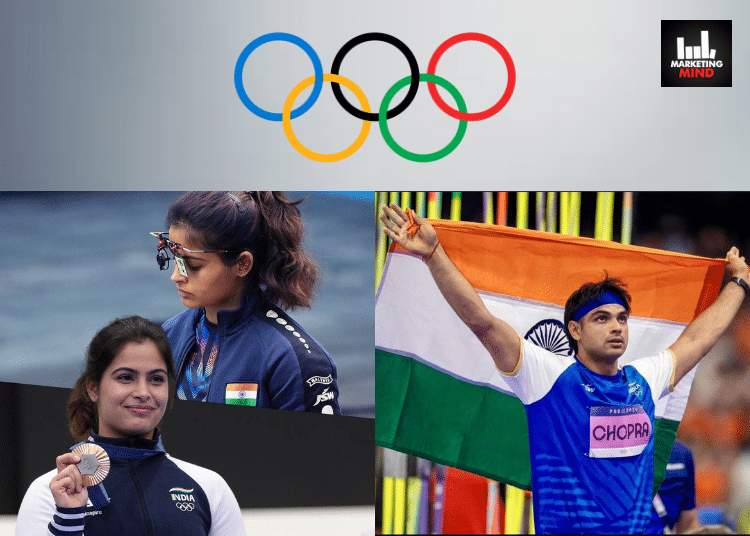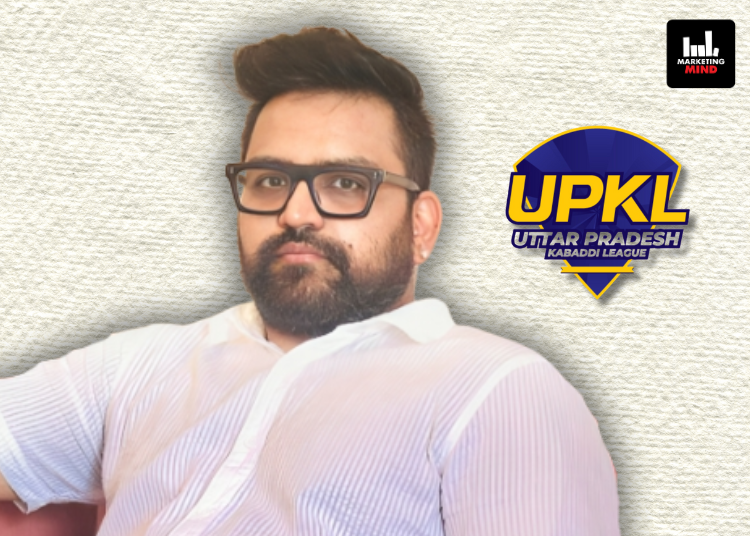As the Paris Olympics 2024 recently wrapped up with India clinching 71st place and a total of six medals, one silver and five bronze, the focus shifts to the evolving landscape of non-cricket sports in the nation. This latest success not only underscores the potential of Indian athletes across various disciplines but also raises important questions about how these accomplishments could influence the marketability and recognition of sports figures outside the cricketing sphere.
The conversation now centres on how this shift could impact endorsement opportunities and the broader perception of non-cricket sports in India.
Neeraj Chopra secured the silver medal in the Men’s Javelin Throw, while Manu Bhaker won bronze in both the Women’s 10m Air Pistol and the Mixed Team 10m Air Pistol events. Aman Sehrawat won a bronze in Men’s 57kg Freestyle Wrestling and Swapnil Kusale won bronze in the Men’s Rifle 3 Position. Additionally, the Indian Men’s Hockey Team clinched bronze with a 2-1 victory over Spain.
Although it marks an improvement from the pre-Tokyo Olympics performance, it still falls short of the high expectations set for the large Indian contingent. However, while the medal tally may not have met expectations, industry leaders highlight a positive outcome from the Olympics. They argue that the true success lies in the enhanced public engagement with the sports. Additionally, these athletes build lasting connections with the audience by aligning with meaningful causes and strategic brand endorsements.
Industry leaders have noted that these Olympic stars are witnessing a remarkable surge in their brand value. Notably, Chopra and Bhaker have emerged as the most coveted endorsers, with an increasing number of brands vying to secure endorsements with them. Bhaker’s recent endorsements include prominent brands such as India Gate Foods, KFC India, Thums Up, and Performax Activewear. On the other hand, Chopra, who has been a prominent brand ambassador for various brands since his Tokyo Olympics victory, has recently added several notable endorsements to his roster. He now represents brands including Samsung, Limca GlucoCharge, Eveready, and Britannia, among others.
Aditya Jaishankar, Brand Consultant, said that Neeraj Chopra’s historic achievement at the Tokyo Olympics and his down-to-earth personality have made him a top choice for brands like Gatorade, Under Armour, and Tata AIA. He is among the top 10 sportsmen in terms of endorsement value. Market analysts Kroll recently estimated Chopra’s brand value at $29.6 million, a figure expected to rise in the leadup to the 2024 Paris Olympics. His portfolio is certainly varied, from advertising insurance to even helping Marvel studios promote the Black Panther sequel Wakanda Forever in India.
“Notably, the partnership between MuscleBlaze (a prominent youth protein brand) and Chopra in the past resulted in increased brand visibility, trust, and loyalty among the target audience. His credibility and authenticity as an Olympic gold medalist undoubtedly contributed to the credibility of the campaign. Coke and Cred leveraged his sheer youth appeal to launch campaigns under him . All this clearly points to the Olympians’ strong connection with the youth,” he added.
Lloyd Mathias, Angel Investor and Business Strategist, emphasised that Chopra is rapidly solidifying his status as one of India’s most iconic and renowned athletes. With back-to-back Olympic medals, gold in one and silver in another, he is the first Indian to achieve this distinction. More importantly, he stands among the world’s elite athletes, consistently ranking at the top for the past seven to eight years.
“Outside of cricket, Chopra is arguably India’s most recognised sports figure, which is a remarkable feat in itself. His endorsements are likely to grow even further. His trajectory has been exceptional, and he embodies the qualities that brands look for, he’s non-controversial, well-mannered, and always conducts himself with integrity. He is undoubtedly emerging as a major superstar for Indian brands,” he added.
Furthermore, he said that Chopra’s brand endorsements have seen a significant rise, especially during the Tokyo Olympics when he won the gold. While it’s not always possible to win gold, his silver this time holds great value as well. He still has many years ahead of him, and there’s a lot of hope and expectations riding on his shoulders. His talent and potential will continue to flourish, and his growth as a brand endorser will remain strong.
Meanwhile, Nisha Sampath, Managing Partner, Bright Angles Consulting LLP, highlighted that Chopra epitomises many values that connect with ‘New Age India’. For example, going off the beaten track to pursue a passion based on love. His deep patriotism and his kinship with sportspeople that transcends barriers. He comes across as a very clean, focused individual and as the Cred ad showcased, one with an earthy sense of humour.
Furthermore, she went on to say, “This makes him immensely relatable, and aspirational at the same time. While many brands have used him as a face, I still think Cred’s ad with him was the most memorable and likeable. To an extent, Manu Bhaker’s journey is similar to Neeraj Chopra and PV Sindhu. She has forged her path in a non-traditional sport and scripted history for India. But she has her own distinct persona.”
On the other hand, Sridhar Ramanujam, Founder & CEO, Integrated Brand-comm, believes that in India, celebrity endorsements are a significant driver of marketing, unparalleled anywhere else in the world. The landscape is dominated by two primary categories of celebrities, film stars and cricketers. Film stars maintain their appeal across the country due to their widespread popularity and the universal reach of cinema. Meanwhile, cricketers, especially those involved in high-profile campaigns like PepsiCo, have also achieved substantial influence.
“Despite their prominence, the effectiveness of celebrity endorsements often comes under scrutiny during cost-benefit analyses. High-profile endorsers like Virat Kohli and MS Dhoni can appear in over 25 commercials, making it difficult for consumers to keep track of which brands they are promoting. This saturation can lead to confusion among consumers, questioning the long-term impact on sales beyond initial awareness,” he said.
“Brands continue to invest heavily in celebrity endorsements due to their ability to quickly boost brand visibility and impact, particularly for new product launches. For brand managers with short tenures, leveraging celebrity endorsements provides a swift and effective way to enhance brand salience. However, this approach is sometimes adopted without thorough consideration of its true cost versus benefit. The key takeaway is that every endorsement strategy must be carefully evaluated for its return on investment,” he added.
Furthermore, he went on to say that big brand endorsements remain concentrated around a select few cricketers. Marketers are always on the lookout for new opportunities. The advantage with someone like Chopra is twofold. First, if you compare his cost to other celebrities (something you can verify with a celebrity endorsement company), the price difference would likely be substantial. Second, he’s not only good-looking but has also achieved something no other Indian has on the global stage, making him a viable alternative. Similarly, Bhaker is also highly presentable and has accomplished what no one else has.
While discussing the potential categories that could align with Bhaker, Sampath mentioned that the obvious fit for her would be fashion, wellness, and personal care. But it would be great to see if there are marketers who can look beyond the obvious. She would be a great fit with a category like watches which require precision in craftsmanship. In most cases, brand custodians recognise that long term partnership with a celebrity benefits a brand in recall and positive rub-off on associations.
Athletes typically have careers that are relatively short. When asked whether brands are hesitant to commit to long-term partnerships with athletes and if short-term collaborations might be more advantageous, Sampath emphasised, “Brands can forge long term relationships with celebrities if they leverage different facets of their personality and values rather than only focusing on success. Image management teams should also look out for endorsers with this outlook, as this will help to make the endorser brand more robust, multi-faceted and sustainable. Success is temporary. But values are permanent.”
For example, Vinesh Phogat went back without winning a medal but she has won hearts of not only Indians, but people around the world. The growing interest in Olympics amongst the Indian public demonstrates that our sporting culture is gradually evolving beyond cricket. It’s an exciting time for sports, and also for brands to decode where and how they can participate in this emerging landscape, she added.
On the other hand, Mathias said that in contrast to movie stars, athletes often have shorter periods of fame. While top athletes can sustain their peak for around 10 years, many have careers that are even briefer. However, this largely depends on how well they manage themselves early on. Endorsements come not only from their achievements and standing in their sport but also from the image they build outside of it, through their social media presence and their association with meaningful causes. While it’s true that athletes typically have shorter celebrity lifespans than actors, how well they maintain their image plays a significant role. A well-managed sports star can remain popular for over a decade.
Bhaker has recently made a strong entry into the endorsement space. When asked how brands can leverage her story to create authenticity and forge a meaningful connection with their target audience, Jaishankar mentioned that she adds an interesting dimension of her rising from a small town to a prodigy at shooting.
Her humble origins can be further leveraged to add a touch of authenticity to brand endorsements. Being a versatile sport person who was good at skating to martial arts, makes for an interesting reservoir of personal stories that a brand could tap into to leverage her potential as a brand ambassador to the fullest.
“She may not see the kind of craze that PV Sindhu or Neeraj Chopra have experienced. The simple reason being that physically demanding sports manage to enthral the audience more than a sport like shooting that probably has its limitations to keep the audience engaged beyond a point continuously. This may limit her progress as a brand ambassador as well beyond a certain point, despite her winning streaks,” he added.
Meanwhile, Mathias said Bhaker stands out as an incredible addition for various reasons. Firstly, she scripted history when she became the first Indian to win two medals at the same Olympics. Secondly, at just 22, she is remarkably young, with a vibrant personality that can appeal to a wide range of brands. Although she is a sportsperson, her versatility extends beyond that, she can effectively endorse lifestyle and fashion brands, as well as a broad spectrum of nutrition and food products.
“Her age opens the door to numerous possibilities, as she appeals to an extensive variety of categories. Furthermore, shooting is not an age-restrictive sport, which means she has decades ahead to build her legacy. I believe she will emerge as one of India’s biggest sports superstars. Additionally, in the female sporting arena, aside from a few prominent cricketers like Mithali Raj and Smriti Mandhana, Manu has the potential to become one of India’s leading female athletes. In fact, she is already ahead in this race,” he added.
While Chopra has been approached by a diverse range of brands, there are certain categories of brands that could particularly benefit from associating with Bhaker. Jaishankar mentioned that shooting as a sport involves focus. Therefore, even an edtech brand or an education brand can benefit from association with Bhaker. Additionally, any brand that either enhances your focus or celebrates focus as a virtue can associate with her.
“So the difference lies in being able to accommodate both sports oriented brands and even educational brands under her wings and carry the message forward with credibility,” he added.
In a discussion about the challenges brands encounter when appointing athletes as brand ambassadors and strategies to address these issues, Jaishankar noted that the major hurdle is that unlike a sport like cricket, there is limited visibility around these stars on an everyday basis. Archery or javelin championships don’t happen every month.
“Out of sight is clearly out of mind. To be a part of consumer conversations one needs to top of mind throughout the year. Brands that tie up with these stars will have to live with the fact that there could be limited visibility of their brand ambassadors. The issue could be mitigated by constantly feeding the consumer inspirational stories that make the consumer participate in their journey. It’s like a give and take journey where brand communication or PR plays a role in constantly inculcating interest in these celebs,” he added.
Meanwhile, Mathias said that there are two key challenges when working with sportspersons. First, while sporting success is achievable, there is always a possibility of failure due to the highly competitive nature of sports. Second, controversies can arise, often tied to the causes athletes support. This is true for any celebrity, including movie stars, and brands generally prefer to play it safe.
“Therefore, it’s crucial for brands to focus on the athlete’s strengths, whether it’s their success, competitive spirit, or physical fitness. Highlighting these positive attributes can create a strong brand association. However, it’s important to steer clear of athletes with a history of frequent controversies. Brands need to be more selective in their partnerships, opting for individuals who reflect their values and aiming for longer-term associations,” he added.
In conclusion, Mathias discussed the evolving landscape of brand endorsements following the Paris Olympics, emphasising how he envisions the future of this sector.
He said that other sports in India are growing, albeit at a much smaller scale compared to cricket. However, there is increasing competition across the board. It’s encouraging to see hockey making strides, especially with India securing a second bronze.
“I believe hockey could become the next big thing after cricket. While cricket remains dominant, with India clearly ahead, I hope this achievement gives hockey a much-needed boost. India is now one of the world powers in hockey, which could attract more commercial sponsorship. Beyond hockey, other sports are also seeing the rise of stars. India is making significant progress in shooting and emerging as a strong force in badminton. While cricket still captures 95% of the attention, I feel other sports are gradually gaining ground, and the Olympics have played a crucial role in uplifting them,” he added.
















